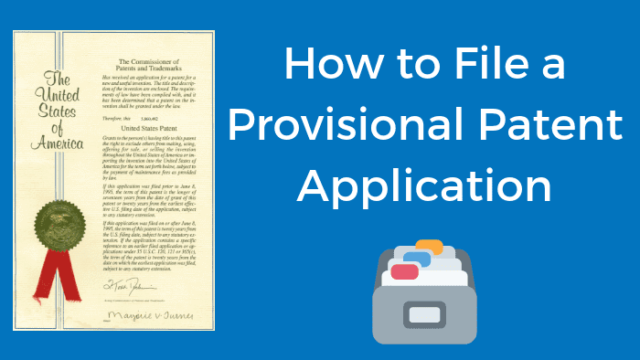
Innovation is at the core of success in today’s competitive world. However, many inventors face a dilemma when it comes to sharing their ideas with others. They are often concerned about the possibility of their ideas being stolen, and rightfully so. In this article, we will explore some ways to collaborate with others while protecting your invention.
Sign a Non-Disclosure Agreement (NDA)

When collaborating with others, it’s important to protect your intellectual property. One effective way to do this is by signing a non-disclosure agreement (NDA). An NDA is a legal contract that prevents the recipient from disclosing or sharing confidential information with anyone else. In this article, we will explore the benefits of signing an NDA to protect your intellectual property.
What is an NDA?
An NDA is a legally binding contract between two parties that prevents the recipient from disclosing or sharing confidential information with anyone else. The confidential information can include trade secrets, inventions, business plans, or any other information that is not publicly available.
Benefits of Signing an NDA
One of the main benefits of signing an NDA is that it creates a legally enforceable contract. If the recipient of the confidential information violates the terms of the NDA, the inventor can take legal action to protect their intellectual property.
Another benefit of signing an NDA is that it can help establish trust between the parties. By signing an NDA, the recipient is demonstrating that they take the inventor’s intellectual property seriously and are committed to protecting it.
An NDA can also provide the inventor with peace of mind. Knowing that their confidential information is protected by a legally enforceable contract can give the inventor the confidence to collaborate with others without fear of theft or unauthorized disclosure.
File a Provisional Patent Application

Another way to protect your invention is by filing a provisional patent application. A provisional patent application is a temporary patent application that provides you with a priority date for your invention. This means that no one else can file a patent application for the same invention after your provisional patent application has been filed. One more adequate method to protect your invention is by filing a provisional patent application with the help of a company like InventHelp. This gives you time to develop your invention and explore collaboration opportunities without the risk of someone else filing a patent application for the same invention.
Share Only What Is Necessary
In today’s fast-paced world, collaboration is key to success. Many innovators are open to sharing their ideas with others to take their inventions to the next level. However, when it comes to sharing intellectual property, it’s important to exercise caution to protect it from being stolen. One effective way to protect intellectual property is by sharing only what is necessary.
The Importance of Sharing Only What Is Necessary
When sharing intellectual property, it’s essential to share only the information that is required for the collaboration. Sharing too much information can increase the risk of theft, putting the inventor’s hard work and creativity at risk. By sharing only what is necessary, the inventor can maintain control over their intellectual property and limit the risk of theft.
Example of Sharing Only What Is Necessary
For instance, when working with a manufacturer, an inventor may only need to share the design specifications for their invention. Sharing the entire invention or underlying technology may not be necessary at this stage of the collaboration. By sharing only the design specifications, the manufacturer can create a prototype while the inventor maintains control over their intellectual property.
Risk of Sharing Too Much Information
Sharing too much information can also jeopardize the possibility of obtaining a patent. Under patent law, public disclosure of an invention prior to filing a patent application can result in the loss of patent rights. Therefore, it is critical to share only what is necessary to avoid public disclosure before filing a patent application.
Work with Trusted Partners

Collaborating with trusted partners is another way to protect your invention. Working with individuals or companies that have a reputation for respecting intellectual property can help mitigate the risk of theft. Additionally, it is important to conduct due diligence on potential partners to ensure that they are reputable and have a track record of successful collaborations.
Use Confidentiality Labels
Confidentiality labels are a simple but effective way to protect intellectual property. They can be used to remind others that the information being shared is confidential and should not be disclosed to anyone else. In this article, we will explore the benefits of using confidentiality labels to protect your intellectual property.
What Are Confidentiality Labels?
Confidentiality labels are a way to indicate that the information being shared is confidential. They can be applied to documents, emails, and other forms of communication. These labels serve as a visual reminder to the recipient that the information they are receiving should not be shared with anyone else.
Benefits of Using Confidentiality Labels
One of the main benefits of using confidentiality labels is that they serve as a deterrent. When recipients see the label, they are reminded that the information they are receiving is confidential and that they should not disclose it to anyone else. This can help prevent unintentional disclosures and reduce the risk of theft.
Another benefit of using confidentiality labels is that they can be used to demonstrate that the inventor has taken reasonable steps to protect their intellectual property. This can be important in legal proceedings if it is necessary to demonstrate that the inventor took appropriate steps to protect their intellectual property.
Monitor Your Intellectual Property

Finally, it is important to monitor your intellectual property. Regularly checking patent databases and conducting searches can help you identify potential infringements. If you suspect that someone has stolen your invention, it is important to take immediate action to protect your rights.
Conclusion
Collaborating with others can help bring your invention to the next level, but it is important to take steps to protect your intellectual property. By signing NDAs, filing provisional patent applications, sharing only what is necessary, working with trusted partners, using confidentiality labels, and monitoring your intellectual property, you can collaborate with others while keeping your invention safe. Remember, innovation thrives in collaboration, but it also needs protection.








